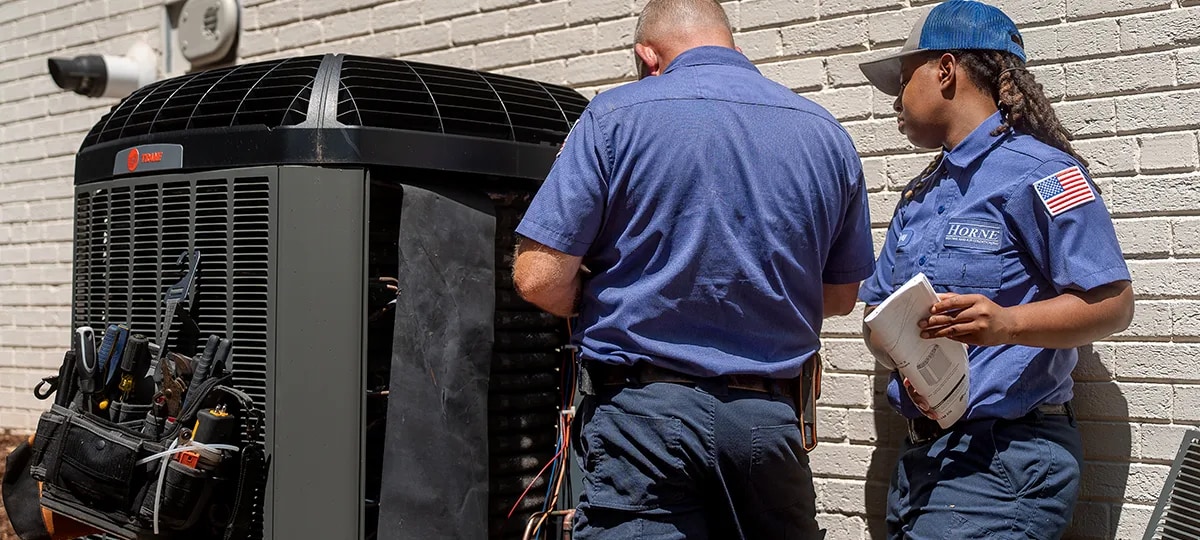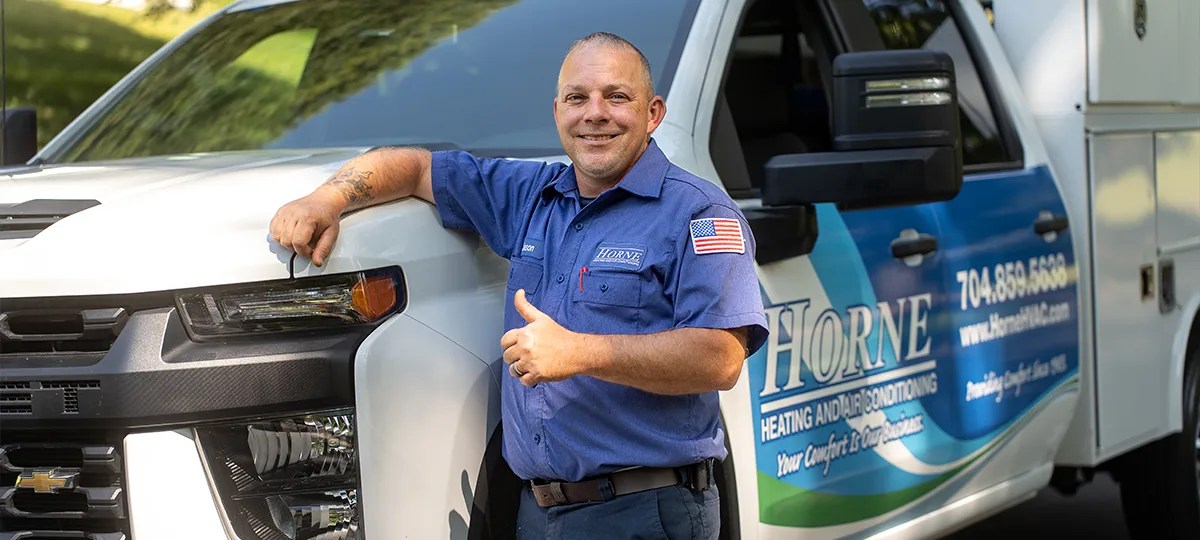Duct Sealing Before the Cold: How Our HVAC Team Finds and Fixes Costly Leaks

Duct Sealing Before the Cold: How Our HVAC Team Finds and Fixes Costly Leaks
As temperatures start to drop, most homeowners turn their attention to thermostats, insulation, and heating systems—but there’s one hidden energy drain that often slips under the radar: leaky ductwork. Those small gaps, cracks, and loose connections in your ducts can cost you hundreds of dollars each winter by letting warm air escape before it ever reaches your living space.
Getting your ducts sealed before the cold sets in is one of the smartest—and most overlooked—ways to prepare your home for efficient, consistent comfort. Let’s break down why duct sealing matters, how professionals identify leaks, and what kind of difference it can make for your home.
How Does Duct Leakage Increase Heating Costs Before the Cold Season?
When your ducts leak, you’re essentially paying to heat the outdoors—or the inside of your crawlspace, attic, or garage. Air that should flow through vents and into rooms escapes through small openings, forcing your HVAC system to work harder and longer to maintain the set temperature.
Here’s how that adds up:
1. Lost Heated Air: On average, duct leaks can waste 20–30% of the air moving through your system. That means nearly a third of your heating effort goes unused.
2. Uneven Room Temperatures: Leaks cause certain rooms to feel colder while others overheat, creating uncomfortable temperature swings throughout your home.
3. Higher Energy Bills: Because your furnace or heat pump must run longer cycles, your utility costs climb quickly—especially during peak heating months.
4. Increased System Strain: Constant overworking can shorten the lifespan of your equipment and lead to more frequent repairs.
5. Reduced Air Quality: Leaks pull in dust, allergens, and insulation fibers from attics or crawlspaces, spreading them throughout your living areas.
By sealing those gaps early before the cold hits, you lock in warmth, lower your bills, and keep your system running smoothly all winter long.
Why Do Concrete Expansion Joints and Open Crawlspaces Increase Heat Loss in Freezing Periods?
You might not connect your foundation or crawlspace to your heating efficiency, but they’re often the silent culprits behind major heat loss. Here’s why:
1. Air Movement Through Gaps: Expansion joints and open crawlspaces create entry points for cold outdoor air. That air seeps upward, cooling floors and pulling heat away from living areas.
2. Unsealed Ducts in Crawlspaces: Many homes have ducts running through these areas. If they’re not sealed, warm air leaks directly into cold zones, amplifying energy waste.
3. Thermal Bridging: Concrete and metal components conduct heat away from the home’s interior, especially when not properly insulated or sealed.
4. Moisture and Draft Issues: Open crawlspaces allow moisture and cold air to collect, leading to condensation and making heating less effective.
5. Pressure Imbalance: When cold air infiltrates through lower-level gaps, it disrupts indoor air pressure, forcing your HVAC system to work harder to balance the temperature.
By sealing ducts and addressing these structural gaps, you create a tighter building envelope that traps warmth and reduces unnecessary heat loss.
What Signs Indicate a Home Needs Professional Duct Sealing?
Most homeowners don’t realize they have leaky ducts until the symptoms become obvious. If your system feels like it’s underperforming even after maintenance or filter changes, duct leaks could be to blame.
Look for these signs:
1. Uneven temperatures: Some rooms stay chilly no matter how long the heat runs.
2. Rising energy bills: You’re paying more for heating without seeing comfort improvements.
3. Dust buildup: Excessive dust or debris near vents suggests air leakage from dirty areas.
4. Weak airflow: Air feels faint or inconsistent when you hold your hand near a vent.
5. Noisy ducts: Whistling or rattling sounds may signal air escaping through cracks or joints.
6. Long heating cycles: Your system runs longer than usual to reach your desired temperature.
If any of these issues sound familiar, it’s time for a professional duct inspection. Early intervention prevents bigger repair costs later.
What Methods Do HVAC Teams Use to Locate Hidden Duct Leaks?
Duct leaks aren’t always visible—they can be buried in walls, attics, or crawlspaces. That’s why professional HVAC technicians rely on advanced diagnostic tools to pinpoint leaks with precision.
Here’s how it’s done:
1. Pressure Testing (Duct Blower Test): A fan pressurizes the duct system while sensors measure air loss, revealing how much leakage is present.
2. Smoke Testing: Non-toxic smoke is introduced into the ducts to visually identify where air escapes.
3. Thermal Imaging: Infrared cameras detect temperature differences, highlighting hidden leaks and weak insulation points.
4. Airflow Measurement: Technicians compare air pressure and flow readings across supply and return ducts to locate imbalances.
5. Visual Inspection: Technicians check connections, seams, and joints for visible gaps or old, failing tape.
By combining these methods, HVAC pros can map your entire duct system, isolate problem areas, and develop a precise sealing plan tailored to your home.
What Results Should a Home Expect After Ducts are Professionally Sealed?
Once your ducts are sealed, the difference is often noticeable within hours. Your home feels warmer, the system runs quieter, and your energy use drops. But those are just the immediate benefits—there are lasting payoffs too.
After sealing, homeowners typically experience:
1. Lower Heating Bills: Reduced air loss means your furnace or heat pump uses less energy to maintain comfort.
2. More Consistent Temperatures: Airflow is evenly distributed, eliminating hot and cold spots across rooms.
3. Better Air Quality: Cleaner ducts prevent dust, allergens, and pollutants from circulating through your home.
4. Longer System Life: With less strain on your HVAC system, major components last longer and need fewer repairs.
5. Quieter Operation: Sealed ducts minimize the whistling, rattling, and vibration noises that leaks often cause.
Overall, it’s a permanent improvement that boosts both comfort and efficiency, especially when done before winter hits.
How Do Outdoor Living and Outdoor Lighting Improve in Reliability, Efficiency, and Comfort After Sealing Exterior Circuits and Interfaces?
It’s not just your indoor environment that benefits from duct and exterior sealing—your outdoor spaces do too. When HVAC and electrical interfaces along exterior walls or outdoor circuits are sealed properly, they perform better and more efficiently.
Here’s how:
1. Stable Electrical Performance: Sealing prevents moisture and cold air from seeping into outdoor electrical boxes, reducing the risk of shorts or failures.
2. Longer Lighting Lifespan: Outdoor lighting fixtures stay dry and stable, which helps bulbs and wiring last longer.
3. Improved Comfort in Outdoor Spaces: Patios, porches, and garages retain more stable temperatures, even on chilly evenings.
4. Reduced Drafts and Noise: Proper sealing around outdoor vents and conduits minimizes unwanted airflow and vibration.
5. Better Energy Efficiency: When outdoor interfaces are sealed, your HVAC system doesn’t lose heat through exterior gaps, keeping your entire property more balanced and efficient.
These improvements may seem small, but together they contribute to a more comfortable, reliable, and energy-smart home inside and out.
The Bigger Picture: Why Duct Sealing Before the Cold Matters
Duct sealing isn’t just a tune-up; it’s a true investment in your home’s performance. By sealing leaks before cold weather arrives, you prevent heat loss, lower your bills, and ensure your HVAC system runs at its peak when you need it most. Plus, you’re creating a cleaner, quieter, and healthier home environment.
Winter comfort shouldn’t come with waste or frustration and with professional duct sealing, it doesn’t have to.
Stay Warm, Save Energy: Professional Duct Sealing Services by Horne HVAC Charlotte
Horne HVAC Charlotte understands how important comfort and efficiency are when temperatures begin to drop. The company’s skilled team uses advanced diagnostic tools to detect even the smallest duct leaks and seal them correctly the first time.
With a focus on helping homeowners save energy, reduce costs, and improve comfort throughout the home, Horne HVAC Charlotte ensures every system, whether in an attic, crawlspace, or slab is properly sealed, clean, and winter-ready.
Homeowners can rely on Horne HVAC Charlotte for expert care and lasting results. To prepare for the cold season, contact Horne HVAC Charlotte to schedule a professional duct inspection and sealing service.
Images



